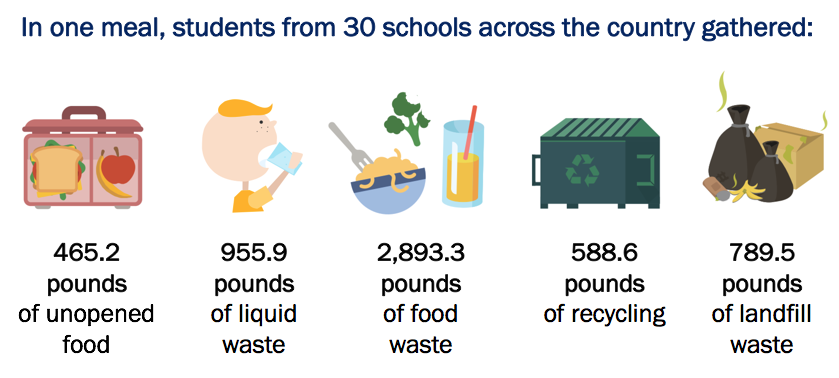Multi-agency initiative invites public and private partners to collaborate on strategy to reduce food waste
 Shaunice Wall is NCL’s Linda Golodner Food Safety and Nutrition Fellow
Shaunice Wall is NCL’s Linda Golodner Food Safety and Nutrition Fellow
An estimated 40 percent of food goes uneaten in the United States. Between 2007 and 2014, American consumers wasted nearly 150,000 tons of food per day. Yet, 40 million Americans struggle with hunger, including 12 million children.
The massive amount of food waste has far-reaching consequences on food security, the economy, and our environment. On April 9, 2019, the U.S. Environmental Protection Agency (EPA) hosted an event NCL attended for its Winning on Reducing Food Waste Initiative, a multi-agency effort created to tackle the burgeoning problem of food loss and waste through combined and agency-specific action.
Led by the EPA, the U.S. Department of Agriculture (USDA), and the U.S. Food and Drug Administration (FDA), the purpose of the initiative is to work with communities, organizations, and businesses along with state, tribal, and local governments to reduce food loss and waste by 50 percent over the next 15 years.
In attendance were state, local, and community leaders and other stakeholders to discuss how all levels of government can work together to reduce food waste. A strategy that includes six key action areas–such as improving consumer education and food labeling–was introduced.
“We need to feed our hungry world, and by reducing food waste, we can more wisely use the resources we have,” said Secretary Sonny Perdue of the USDA.
A panel titled “Lessons Learned from States, Cities and Organizations in Reducing Food Waste” discussed various efforts to combat food waste. One effort mentioned was a recycling assistance program in Massachusetts called RecyclingWorks. The program was designed to help businesses and institutions maximize recycling, reuse, and composting opportunities. Another successful program that was discussed was the Save the Food Campaign, a program developed by the Natural Resources Defense Council and the Ad Council to encourage Americans to make simple lifestyle changes like creating shopping lists, freezing food, and using leftovers to reduce waste in their own homes.
Mr. Trump recently designated the month of April as Winning on Reducing Food Waste Month and is encouraging participation from all sectors.
The actions of the USDA, EPA, and FDA will include research, community investments, education and outreach, voluntary programs, public-private partnerships, tool development, technical assistance, event participation, and policy discussion. These three agencies invite public and private partners to participate in Winning on Reducing Food Waste Month through the following:
- Join the conversation: Share your efforts with the #NoWastedFood hashtag in your social media posts throughout the month.
- Educate your community: Learn about USDA, EPA, and FDA programs and resources to reduce food loss and waste.
- Be a U.S. Food Loss and Waste 2030 Champion: Join other corporate and business leaders who have made a public commitment to reducing food loss and waste in their U.S. operations by 50 percent by the year 2030.
The National Consumers League (NCL) has been a longstanding advocate for reducing food waste. Most notably, NCL has produced a and collaborated with like-minded organizations to conduct research on household food waste.
NCL believes that the strategies undertaken by the three agencies will be a critical measure to combatting food waste and we look forward to continuing our work to achieve the goal of reducing food waste by 50 percent by 2030.
For more information on the Winning on Reducing Food Waste Initiative, visit the following webpages:
epa.gov/reducefoodwaste
usda.gov/foodlossandwaste
fda.gov/food/resourcesforyou/consumers/ucm628706


 The Bible is replete with
The Bible is replete with  Instead of throwing away unopened food, it could have been recovered or donated. The potential for food rescue is detailed in the table below. Amounts were calculated using
Instead of throwing away unopened food, it could have been recovered or donated. The potential for food rescue is detailed in the table below. Amounts were calculated using 











